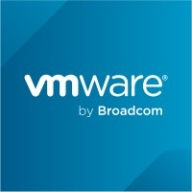

VMware Aria Operations for Applications and DX SaaS both compete in the application performance management category. DX SaaS offers a more comprehensive feature set, but VMware Aria Operations for Applications is favored for its competitive pricing and customer support.
Features: Users value VMware Aria Operations for Applications for its detailed analytics, integration capabilities, and straightforward deployment. DX SaaS is noted for its extensive monitoring, advanced reporting tools, and in-depth analytical features.
Room for Improvement: VMware Aria Operations for Applications could improve scalability, transition features, and analytical depth. DX SaaS could benefit from reduced complexity, a shorter learning curve, and more intuitive user interfaces.
Ease of Deployment and Customer Service: VMware Aria Operations for Applications is recognized for its straightforward deployment process and responsive customer service. DX SaaS requires more initial setup assistance, though its customer service is also well-regarded.
Pricing and ROI: VMware Aria Operations for Applications offers competitive setup costs and satisfactory ROI. DX SaaS is pricier but provides high value through its advanced features.
| Product | Market Share (%) |
|---|---|
| VMware Aria Operations for Applications | 1.0% |
| DX SaaS | 0.3% |
| Other | 98.7% |

| Company Size | Count |
|---|---|
| Small Business | 4 |
| Midsize Enterprise | 1 |
| Large Enterprise | 10 |
Dx SaaS is a solution whose goal is to ensure that businesses and organizations can monitor and manage the way that users experience their applications. This solution contains many powerful tools that are designed to give administrators the maximum amount of control over the experiences that clients have when employing their applications. Organizations and businesses can rest easily and ensure that the product they put out into the world is always being watched for potential issues that will be resolved proactively and quietly.
Dx SaaS Benefits
Some of the benefits that come from using Dx SaaS include:
Dx SaaS Features
When users choose to employ the DX SaaS solution, they gain access to many different capabilities. These features include:
Reviews from Real Users
The DX SaaS solution enables companies and organizations to take charge of the digital experiences that their customers receive. It is designed in a way that empowers these companies to truly monitor their applications and maintain a positive user experience. DX SaaS recognizes that applications can be run on any number of platforms. As a result, solutions that monitor and analyze applications need to be capable of handling a wide variety of platforms. This is one of the considerations that the solution’s designers made integral to its design.
Administrators can leverage DX SaaS to spot potential issues before they can become problems for the users of their applications. DX SaaS has metrics that can provide application administrators with important insights. Patterns and areas where trouble can arise are immediately exposed so that administrators can take the steps that are necessary for the applications to run smoothly.
A consultant at a technical services company writes, “It supports numerous platforms.” Furthermore, they add, “The CA APM blaming metrics are quite useful in identifying a potential issue.”
VMware Tanzu Observability by Wavefront is a powerful tool for monitoring and analyzing the performance and availability of applications and infrastructure in real-time.
With its comprehensive monitoring capabilities, visualizing and analyzing data becomes effortless. The real-time alerting system ensures timely issue resolution, while scalability and a user-friendly interface provide a seamless experience for smooth operations.
We monitor all Application Performance Monitoring (APM) and Observability reviews to prevent fraudulent reviews and keep review quality high. We do not post reviews by company employees or direct competitors. We validate each review for authenticity via cross-reference with LinkedIn, and personal follow-up with the reviewer when necessary.